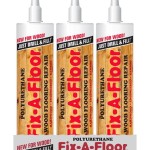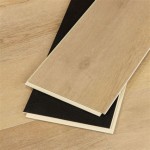Vinyl flooring is a popular choice for many homeowners. It is durable, easy to maintain, and comes in a variety of styles and colors. But is it necessary to use an underlay for vinyl flooring? In this article, we will discuss the need for an underlay for vinyl flooring, the benefits of using one, and the different types of underlay available.
What is Underlay?
Underlay is a thin layer of material that is placed between the floor and the subfloor. It helps to provide an extra cushion of protection between the two surfaces and can also help to reduce sound. It also helps to make the flooring more comfortable to walk on. There are various types of underlay available, including foam, rubber, cork, and felt.
Do I Need Underlay for Vinyl Flooring?
Underlay is not always necessary for vinyl flooring. However, it is recommended if you want to achieve a better result. The underlay can help to reduce noise levels, as well as provide an extra layer of cushioning and insulation. It can also help to prevent any movement in the flooring, which can cause it to crack or become damaged over time.
Benefits of Using Underlay for Vinyl Flooring
Using an underlay for vinyl flooring has a number of benefits. It can help to:
- Reduce noise levels
- Absorb any impact from foot traffic
- Provide an extra layer of cushioning and insulation
- Prevent any movement in the flooring
- Help to make the flooring more comfortable to walk on
Types of Underlay
There are various types of underlay available for vinyl flooring. The most common types are foam, rubber, cork, and felt. Each type of underlay has its own benefits and drawbacks, so be sure to do your research before making a final decision.
- Foam Underlay: This type of underlay is lightweight and easy to install. It is also affordable, making it a great choice for those on a budget. However, it does not provide as much cushioning and insulation as other types of underlay.
- Rubber Underlay: This type of underlay is more expensive than foam but provides better insulation and cushioning. It is also more durable and is a good choice for areas with heavy foot traffic.
- Cork Underlay: Cork underlay is more expensive than foam and rubber but provides better insulation and cushioning. It is also more durable and is a good choice for areas with heavy foot traffic.
- Felt Underlay: Felt underlay is the most expensive option but provides the best insulation and cushioning. It is also the most durable type of underlay and is a good choice for areas with heavy foot traffic.
Conclusion
Underlay is not always necessary for vinyl flooring. However, it is recommended if you want to achieve a better result. The underlay can help to reduce noise levels, as well as provide an extra layer of cushioning and insulation. It can also help to prevent any movement in the flooring, which can cause it to crack or become damaged over time. There are various types of underlay available for vinyl flooring, so be sure to do your research before making a final decision.



/easy-install-plank-vinyl-flooring-1822808-10-6cfb7acfac434155a53e0ef80bfbc825.jpg)











Related Posts








